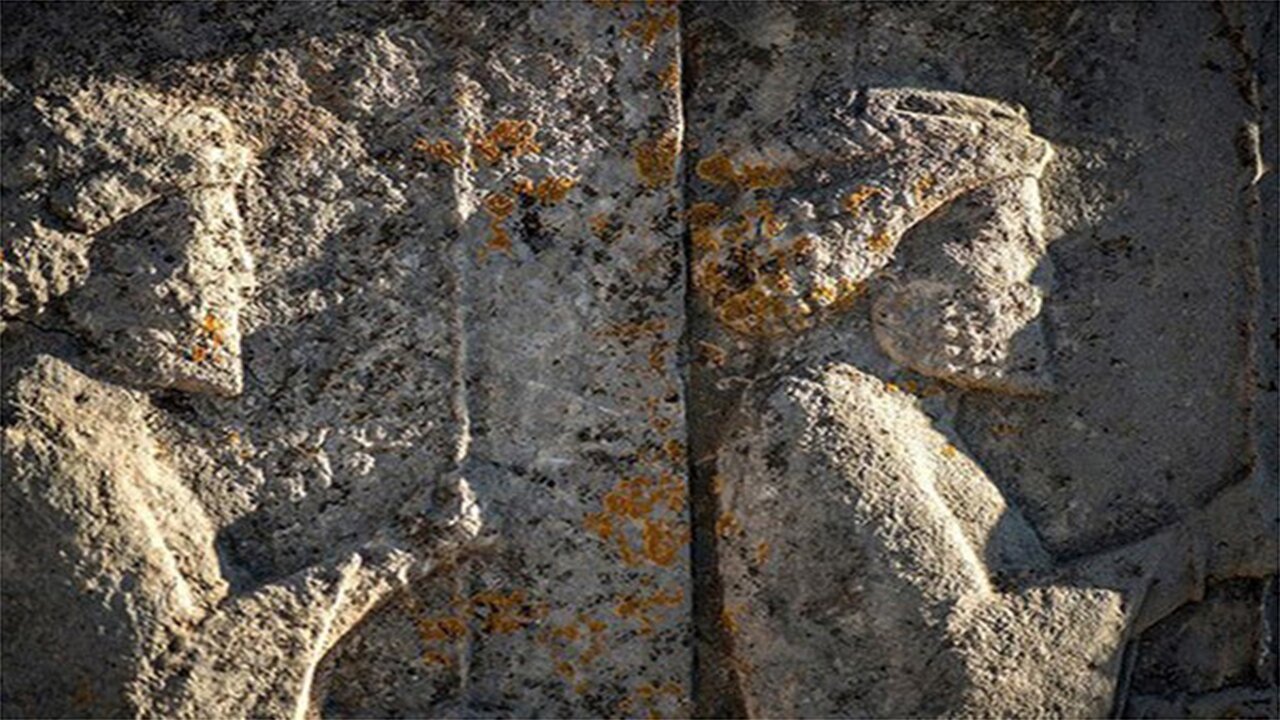Lichens on Iran’s ancient structures unrelated to pollution, expert confirms

TEHRAN - The presence of lichens on Iran’s historical stone carvings and ancient structures is solely due to climatic conditions and moisture, rather than industrial pollution, a prominent cultural heritage expert has confirmed.
Zohreh Bozorgmehr, a distinguished figure in cultural heritage and a member of the cultural heritage board for several of Iran’s historical cities, emphasized that lichens on bas-relief carvings and stone structures such as Persepolis, Tang-e Chogan, and Bishapur Palace are a result of environmental factors rather than pollutants like petrochemical emissions.
In an interview with ISNA, Bozorgmehr stated, “The existence and growth of lichens on historical monuments are facilitated by moisture and specific climatic and ecological conditions. There is no connection between this phenomenon and industrial pollution.”
She acknowledged that while lichen formation can be prevented, it requires specific conservation methods. “Typically, [ a special kind of] resin is applied to protect monuments after lichens are removed. However, due to economic constraints, the quality of the resin used may sometimes be compromised, leading to its deterioration and the eventual regrowth of lichens in the same area.”
Bozorgmehr noted that Iran’s Ministry of Cultural Heritage and Tourism undertakes efforts to preserve monuments from lichen-related damage. However, budget limitations can hinder long-term maintenance, allowing lichens to return after resins degrade over time.
As an esteemed evaluator of historical restoration efforts, Bozorgmehr reaffirmed that the most significant lichen growth occurs in Fars province, attributing this to the area’s specific environmental conditions.
Addressing the geographical spread of the issue, the former director of the Office of Technical Preservation and Restoration at the Ministry of Cultural Heritage explained that lichen growth is more prevalent in temperate and humid regions, particularly in Fars province.
“Lichens thrive in moist environments. While they can be found in various regions, their presence is notably higher in Fars due to its moderate climate. Other areas such as Hamadan may also experience lichen growth, but to a lesser extent.”
The presence of lichens on Iran’s ancient monuments remains a conservation challenge, but experts stress that understanding the natural causes behind their growth is crucial in implementing effective preservation strategies.
Last year, the director of the Persepolis World Heritage Site, noted that research and field investigation for combating lichens was still underway on the stones in Persepolis. “Lichens are one of the most damaging factors to historical buildings, especially stone monuments. The operation of cleaning lichen in Persepolis is carried out in workshop format by a team of conservation and restoration experts and continues to this day,” Alireza Askari-Chaverdi added.
He stated that lichens come in many different types, adding:” According to biologists, lichens are formed by a close association of fungi and algae. In this symbiosis, algae produce organic materials through photosynthesis, consumed by fungi, and on the other hand, fungi dissolve mineral materials in the stone through acid secretion, consumed by algae. “Although not all experts agree with this theory, all experts, including cultural heritage specialists and biologists, believe that lichen growth can damage stones.”
“Due to the diversity of lichens, a definitive and uniform treatment has not yet been presented. Different countries propose different solutions for their cleaning, and although some appropriate methods have been used, there are also criticisms of them.”
In the past, experimental conservators used water and brush to clean lichens, which is the easiest method but has many disadvantages, including the spread of lichens, not removing the roots of lichens, and the emergence of new types of lichens, he explained.
AM
Leave a Comment